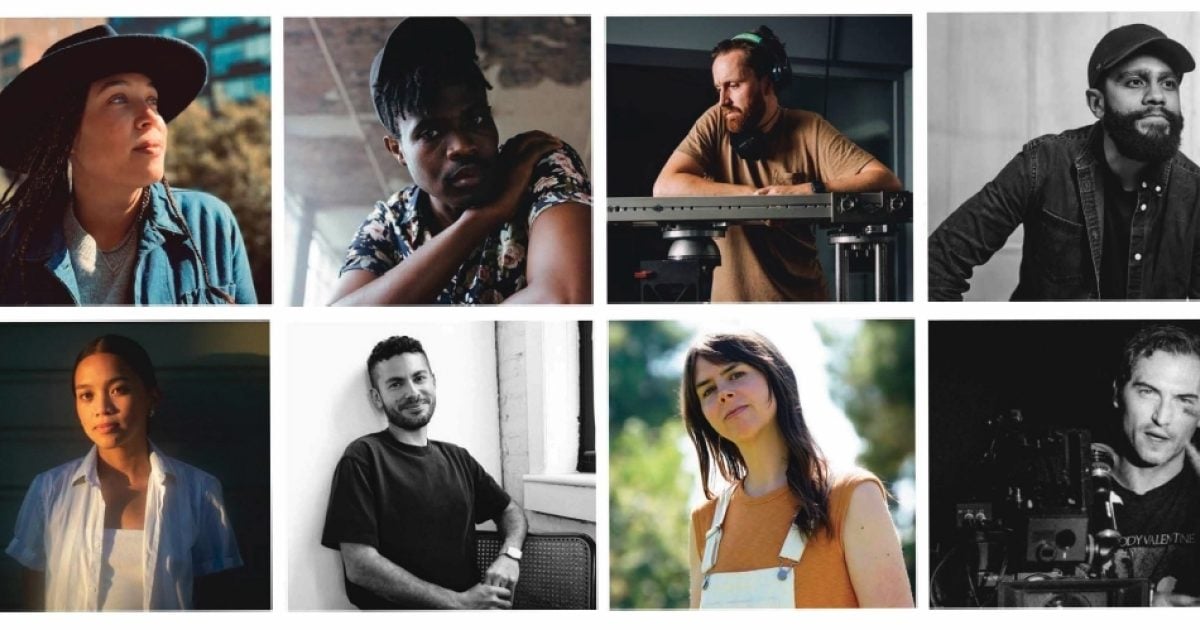This year marks American Cinematographer’s ninth annual Rising Stars of Cinematography roster. Selected by a committee of ASC members, as well as magazine staff, these new talents join the ranks of Rising Stars alumni as artists to watch. Mia Cioffi Henry, Olan Collardy, Tehillah De Castro, Shady Hanna, James Rhodes, John Rosario, Sarah Whelden and Joshua Zucker-Pluda all bring their unique life experiences and perspectives to their work as cinematographers, lending nuance and heart to the projects they tackle. Here, AC shares their stories.
Mia Cioffi Henry
A multifaceted artist from a young age, Cioffi Henry pursued both acting and dance during her early years, and she feels that those artistic pursuits eventually informed her work as a cinematographer. “Having experienced that sense of space and performance, and the need to connect with an audience, led me to a strong interest in story, characters and connections, as well as the humanity of filmmaking. All else is in support of that.”
Cioffi Henry studied production design at California’s Pitzer College as an undergraduate, finding her way to cinematography when film major friends began asking her to hold their camera. Feeling at home in that role, she discovered her calling and turned to her father, a Washington, D.C.-based documentary cinematographer, for advice. “I grew up surrounded by equipment, lights and copies of American Cinematographer. My dad still gifts me an annual subscription!” Following his suggestion, Cioffi Henry found a job at the Los Angeles-based rental house Birns & Sawyer, where she “fell in love with the mechanical process of celluloid. I loved the collaborative effort of making a film; it felt like putting on a play.”
Shortly after, Cioffi Henry moved to New York and started working on set in whatever jobs she could find. Eventually, she moved into the art department and spent time as an on-set dresser. “It was amazing training,” she says. “Being near the director and DP, I learned a great deal about composition, texture and color. I learned what a foreground element was and how to move the camera.”
“I grew up surrounded by equipment, lights
and copies of American Cinematographer.”
Cioffi Henry says that she truly knew she was a cinematographer while she was studying for her MFA at New York University. Still, she remains grateful for the extensive knowledge of other departments that she brings to her work. “I think one of my greatest strengths is being able to speak fluent ‘costumes’ or ‘sets’ with the designers, as well as budget and line items to producers. If you can communicate in everyone’s specific language,” she asserts, “you’re better able to ‘serve the project.’”
Now an associate arts professor at NYU, Cioffi Henry teaches cinematography in the graduate program as the head of cinematography. She is inspired by artists such as Edward Hopper, William Eggleston and Carie Mae Weems, and urges her students to find inspiration through diverse sources, not just the medium of film.
Cioffi Henry is especially proud of her early work on the music video for Mitski’s “Washing Machine Heart,” which allowed her to explore her “fascination with hard light. There’s less space or context to lean into that these days.”
Cioffi Henry has shot the feature films The Surrogate, directed by Jeremy Hersh, which premiered at SXSW in 2020, and Superior, directed by Erin Vassilopoulos, which debuted at the Sundance Film Festival in 2021. Her most recent feature, Eva Victor’s Sorry, Baby, premiered earlier this year at Sundance, where it was acquired for worldwide distribution by A24. Sorry, Baby was also the closing film of the Director’s Fortnight section at the Cannes Film Festival in May, and had its theatrical release in late June.
The cinematographer’s documentary work includes the feature Invisible Beauty, directed by Frédéric Tcheng and Bethann Hardison, which premiered at Sundance in 2023, and she is currently at work on a documentary about the life of legendary Pulitzer Prize-winning investigative reporter Seymour Hersh. The latter project, directed by Laura Poitras and Mark Obenhaus, is set to premiere at the 2025 Venice Film Festival.
Olan Collardy
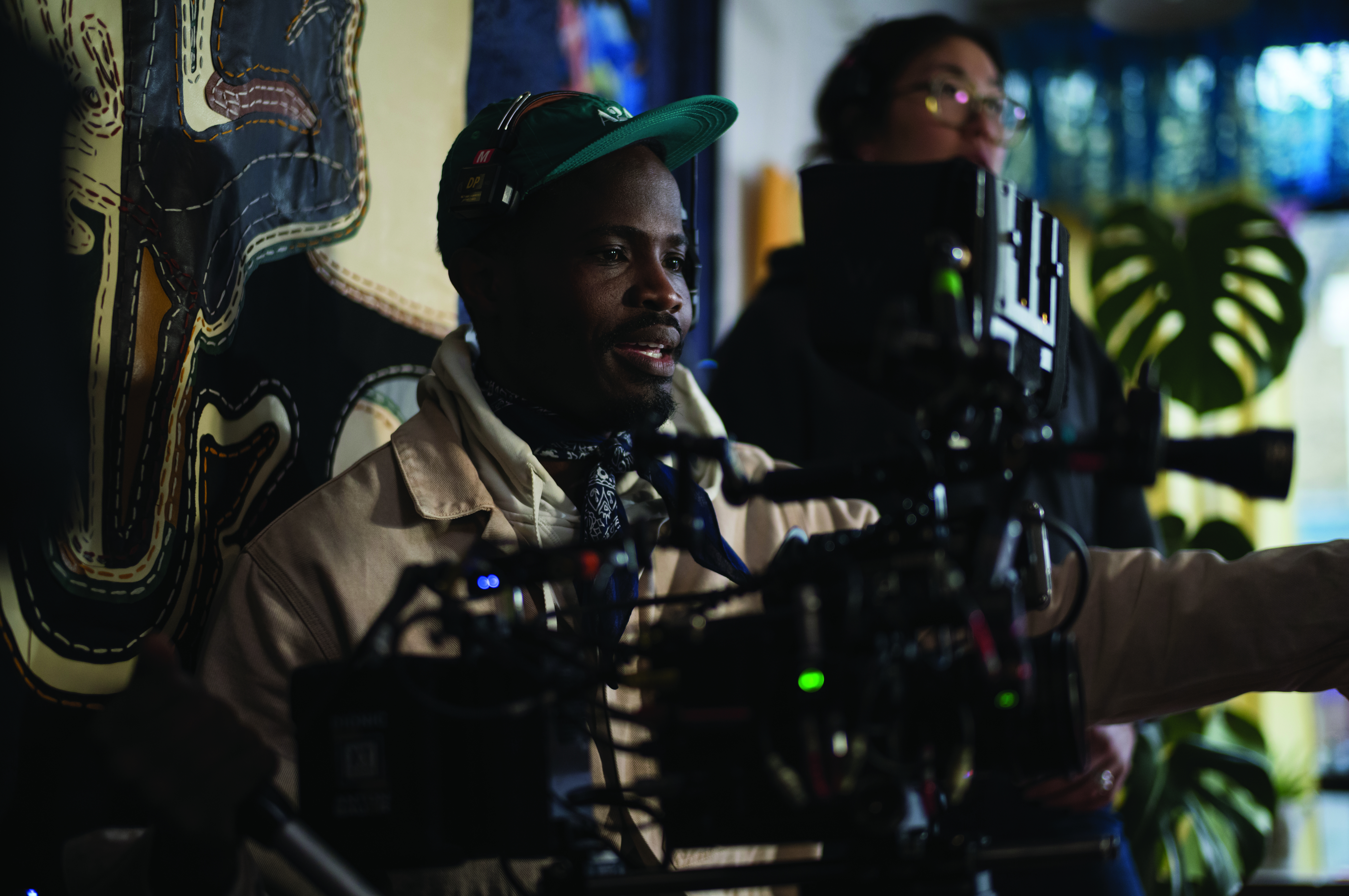
Collardy immigrated to the U.K. from Nigeria when he was 15. Despite his childhood love of the arts, he intended to follow a more traditional academic path. After studying computer science at University College London, he worked at Lehman Brothers and then Goldman Sachs until he quit in 2019 to become a full-time cinematographer.
“The film industry was something I stumbled into,” Collardy admits. His career path began in 2011 when he bought a Canon 550D. “What started out as a hobby spiraled into an obsession. I lost my dad, and it became something that diverted my attention away from the grief. I was able to channel that into this new passion.”
Collardy’s work on director Thea Gajic’s 2016 short Run became a turning point in his trajectory toward filmmaking. The film won the Sundance Ignite “What’s Next” Challenge, which he describes as “a seminal point in my career, when I felt like people saw me as someone who made things that were good.” A music video he shot in 2018 led to Collardy getting an agent, and he realized that he could leave finance to pursue filmmaking fulltime, “which was a bit bonkers to everyone around me. But to me, it gave my life more purpose and drive.”
“I love that there is no one, singular way to
make art.”
Collardy admits he “didn’t even know cinematography was a job title until 2013 or 2014. I had no access to people I could email, or pick up a phone and call.” He cites Shane Hurlbut, ASC as his first mentor; through Hurlbut’s online presence in various forums, where the veteran cinematographer provides tips and counsel to aspiring cinematographers, Collardy gained his first insights into the world of camerawork. Around 2014, he says, “I was part of a small online mentoring community called ‘Shane’s Inner Circle’ for a few years, and it was through this community that I had access to Shane’s knowledge and process and could ask him questions. The mentoring group used Facebook as a platform.”
Collardy has since taken it upon himself to mentor others, bringing younger cinematographers on set to shadow him whenever possible. He also leads monthly Zoom meetings for his cohort of mentees, and over the last three years has taught “Perspectives in Light” at the National Film and Television School in the U.K. “It’s an in-person workshop day of teaching,” he says. “I work with the students to light a scene on a set on their main stage. The idea is for the students to work directly with the DoP and act as crew so they can understand how you might approach lighting a scene, blocking, and so on.” Collardy is passionate about education and helping other filmmakers find their voice, proclaiming, “I love that there is no one, singular way to make art, and I want to be a beacon for others to show that you can find your own way.”
In the past three years, Collardy has shot three critically acclaimed films. His debut feature, Raine Allen Miller’s Rye Lane, premiered at Sundance in 2023; his second, Sasha Nathwani’s Last Swim, won the Crystal Bear for Best Film at Berlinale in 2024; and for his third, Collardy teamed up again with Gajic, his Run collaborator, on Surviving Earth, which premiered at SXSW this year. Looking forward to the projects in his future, Collardy defines the critical components of filmmaking as “one, educating people; two, changing culture; and three, self-expression. Any project that does all three of those, I would call a success.”
Tehillah De Castro
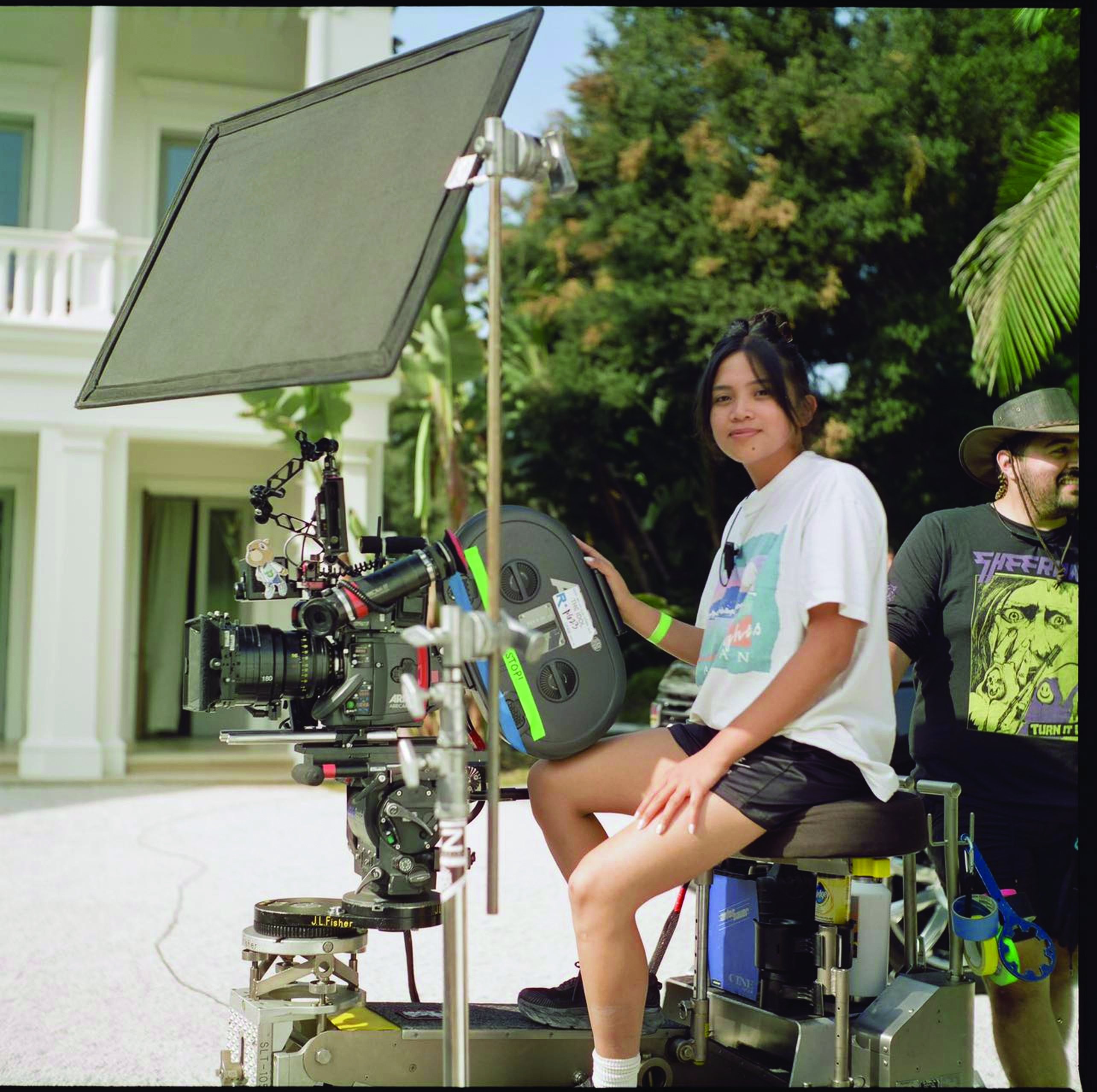
After graduating from film school, De Castro discovered that the cinematographers she most admired were shooting on film. Although she had no experience working in the medium, she taught herself by “shooting everything on film, using every single penny in my savings account. On every music video or spec commercial, I would say, ‘We have 400 feet, what can we make?’ I did everything I could to maximize my experience on film.”
De Castro’s first feature film, Tahara, directed by Olivia Peace, premiered at Slamdance in 2020. The cinematographer’s self-starting attitude led to her second feature, How to Blow Up a Pipeline, a collaboration with director Daniel Goldhaber that premiered at the Toronto International Film Festival in 2022 and was quickly acquired by Neon. De Castro had initially met Goldhaber while day-playing as an electrician on his first feature. When he was searching for a cinematographer to shoot his second feature, Goldhaber was adamant about finding someone who could shoot on 16mm. De Castro recalls, “Daniel spoke to a few folks, and my name came up. He remembered me from his first feature and reached out.”
“I was enamored with the idea of everything
that goes into making a film happen.”
De Castro’s work on shorts can be seen in Natalie Jasmine Harris’Grace, which premiered at Sundance in 2024, and Karina Dandashi’s Baba I’m Fine, which played at SXSW this year. She is especially passionate about her work on the short Trokas Duras, directed by Jazmin Garcia, which highlights the stories of migrant workers; the film earned a 2025 Sundance Jury Award.
At press time, De Castro was working as part of the splinter unit for Marcell Rév, ASC, HCA on the HBO series Euphoria. She reports that “the way he’s pushed me and let me spread my wings has instilled confidence and affirmed my path as a cinematographer.”
Shady Hanna
Hanna traces his love for filmmaking back to watching cartoons in his early years. His family emigrated from Egypt to Canada right before he entered high school, and film became a way to escape when connecting with people proved difficult. Hanna found himself drawn to auteurs with bold voices, including Terrence Malick, Paul Thomas Anderson, Stanley Kubrick and David Lynch. “I was drawn to auteur cinema because those films said a lot without saying too much,” he notes. “I liked leaving with more questions than answers. They challenged me and taught me how much intention can be packed into silence, stillness or subtle movement. That’s something I still chase with the camera.”
As he evolved into a cinephile, Hanna also took every opportunity he could to shoot school club events on his Canon T2i. “Filming school events gave me the first taste of what it meant to translate feeling into image. It made the process feel real.”
Early on, before he had access to mentors in person, “I found them online,” he says. “Vimeo’s staff picks felt like a film school. Watching people make personal, cinematic work with limited gear made image-making feel possible. That was my way in.”
“I’m drawn to projects that ask something
of me emotionally, not just technically.”
After graduating from York University, Hanna jumped into shooting documentaries and music videos. He considers his big break to be a Toyota commercial for the Tokyo Olympics, which he shot during the Covid pandemic. The strict two-week quarantine meant production was having a difficult time finding a cinematographer for the one-day shoot, but for Hanna, “it was a no-brainer. That project pushed me out of my comfort zone creatively and logistically. The crew was bigger than any I’d worked with before, and I spent the quarantine staying up all night prepping. That shoot felt like the start of everything for me.”
Since then, Hanna has garnered two award nominations from the Canadian Society of Cinematographers, for his work on the narrative short Junglefowl, directed by Kalainithan Kalaichelvan, and the documentary feature Swan Song, directed by Chelsea McMullan. He also feels gratified by his work on a commercial for SickKids Foundation in Ontario, Canada, directed by Clément Durou, who partners with Pierre Dupaquier as half of the filmmaking duo We Are From L.A. In May, the spot won a Gold Lion at Cannes. “It was a very rewarding experience, because I was able to spend a significant amount of time prepping and getting to know the ideas, and I’m proud of how it all came together. It’s a reminder to pour as much time and effort into everything as I did on that project.”
When Hanna is picking a production to pursue, everything comes back to emotion. “I’m drawn to projects that ask something of me emotionally, not just technically,” he says. “I want the images to feel honest and lived-in, like they belong to the world of the story, not just the frame. I usually know it’s right when the story stays with me after I read it. From there, I lean on what I’ve picked up in prep, and I let instinct guide how I approach the image. The goal is always to make something that feels inevitable, like it couldn’t have been shot any other way — not because it’s perfect, but because it’s true.”
James Rhodes
Growing up in Nottingham, England, Rhodes laid the foundations of his film intuitions at a young age, renting movies routinely on Sunday afternoons after his morning grassroots football matches. He later studied visual communication at Leeds College of Art, where, while shooting a “Straight8”-style project on MiniDV for the program’s film module, Rhodes discovered he “had a surprising gut instinct for where to put the camera, and when to cut and move it for the next shot.”
While pursuing his interests as a musician, Rhodes started to cut his teeth as a cameraperson by shooting live-performance videos for musicians and bands in Leeds — a pursuit that led to commissions from record labels and later to the concert and performance films he shoots today. Noting the parallels between music and his narrative cinematography, he muses, “There’s an uncanny likeness between performing in a band and operating a camera in a scene with an actor. My sensitivity to an actor’s behavior, energy and tempo informs the behavior of my camera, just as it used to [inform] my bass playing.”
Much of his early inspiration stemmed from the visual iconography of music culture, especially that of the White Stripes; these days, a broader spectrum of photo books influence his work. Finding and sharing books to reference has been a recent passion Rhodes pursues via his Instagram page “The Cinematographer’s Archive,” which he started with his friend Jordan Buck as “a place where DPs could share books with DPs.”
“A dream project for me is one that has
both a physical and an emotional effect on
the audience.”
Rhodes believes his work on the short film Femme, directed by Sam H. Freeman and Ng Choon Ping, really began to unlock projects for him. During the Covid pandemic, he’d gotten a call from friend and fellow cinematographer Molly Manning Walker, who told him she was unable to shoot the short and that she’d recommended him for the job. Rhodes accepted the gig, and Femme went on to win Best British Short at the 2021 British Independent Film Awards; it was also nominated for a BAFTA Award, a Short Film Award at the London Film Festival, and the SXSW Grand Jury Award for Narrative Short.
The short’s success led BBC Film to finance a feature-length version that bowed at the 2023 Berlinale and went on to win a slew of awards, as well as a nod for Best Cinematography at the 2023 British Independent Film Awards. Rhodes reflects, “Films like Femme are the dream. There was a lot of freedom to get into a creative flow state and really make work that was exciting and meaningful. Whenever I read a script, I ask myself, ‘Where are the dials to stress the audience?’ — because those are the types of films I walk away from feeling like I really experienced something, such as Black Swan or Uncut Gems. A dream project for me is one that has both a physical and an emotional effect on the audience.”
Rhodes feels his friends in the cinematography realm have had a huge influence on his career and ethos as an artist. “They’ve really pushed me to grow, and they’ve helped me along the way with opportunities. [ASC members] Eben Bolter and Catherine Goldschmidt have both brought me onto tentpole studio productions over the years, which has given me access to learn a lot about understanding a bigger system.”
Rhodes’ musical background has bolstered major projects like the 2022 CBS special Adele: One Night Only, which won five Emmys, and Elton John Live: Farewell From Dodgers Stadium, which won three in 2023.
At press time, Rhodes was participating in postproduction on the Amazon TV series Malice and the feature California Schemin’ (actor James McAvoy’s directorial debut) while also shooting a feature-length finale for the Netflix series Heartstopper with director Wash Westmoreland
John Rosario
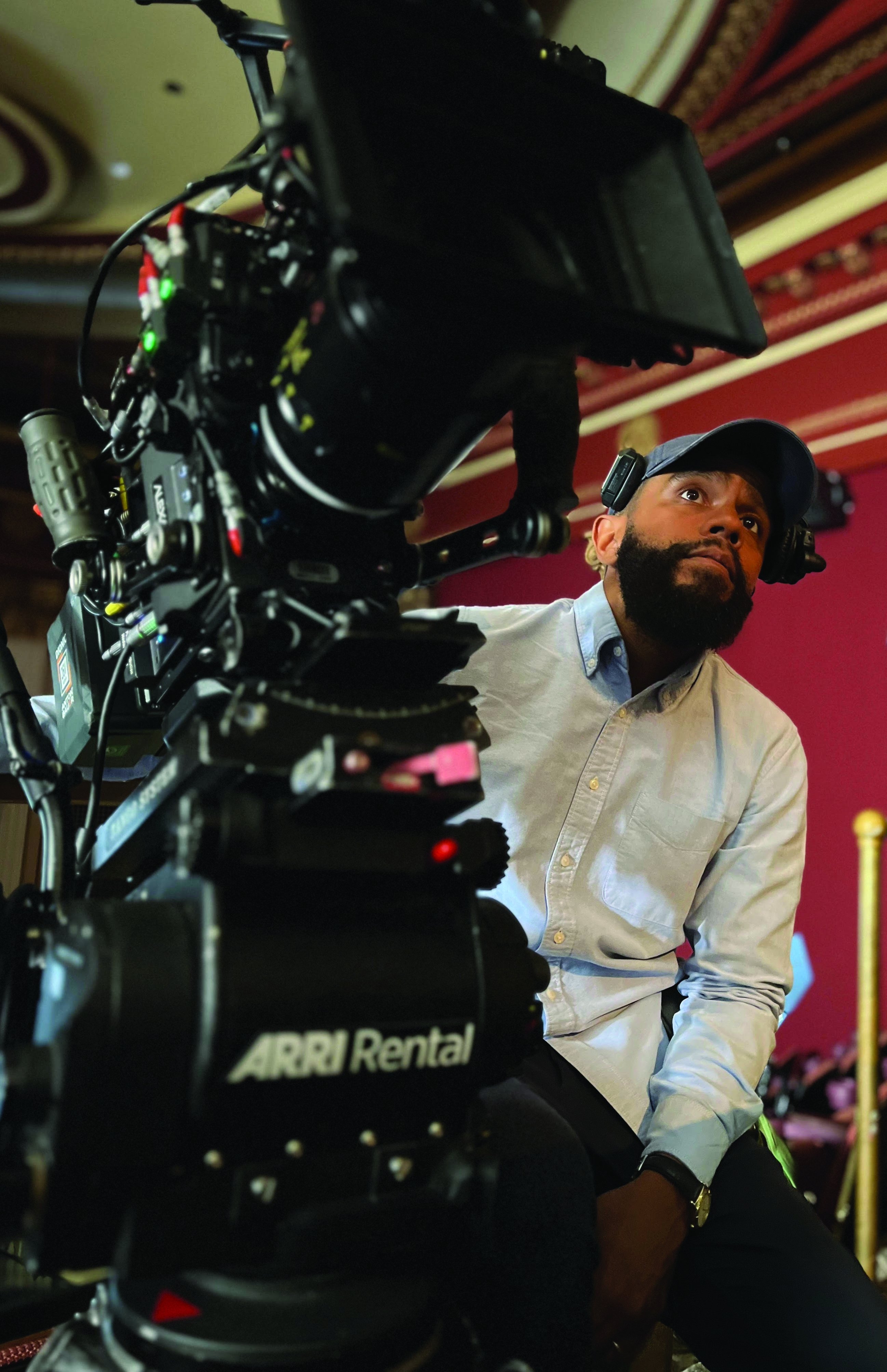
Rosario’s parents emigrated from the Dominican Republic to Brooklyn before he was born. The cinematographer speaks English, Spanish and Italian, and holds dual citizenship in the U.S. and Italy. As a first-generation American, Rosario was instilled with the idea that finding a lucrative job was all that mattered; he remembers going through a list of possible careers that included civil engineering, which prompted him to think, “That seems like something that pays well.” After he began his engineering studies, however, a friend asked Rosario if he could see himself being happy with the choice, and “that very simple question destabilized my entire foundation.”
After abandoning engineering, Rosario decided to study film, where he discovered his affinity for camerawork. He eventually dropped out of film school as well, in order to pursue opportunities in the entertainment industry. The cinematographer cites both decisions as pivotal moments in his growth and career. Rosario began traveling the country shooting music videos, but the taxing schedule eventually wore him down, and he realized he “needed to make a decision to preserve this thing that I love.”
Rosario opted to focus exclusively on shooting narrative projects. After several years, he became determined to work only on projects with scripts that really spoke to him. “I’ve read many scripts that just had no heart in them. The first thing for me is the story. Then I look up the director who’s involved, and if they have a certain style and taste that I align with, that’s even better. Directors who have a distinctive voice, a great script and vision, and who want to make bold swings, excite me.”
“When I work with a director, I have a very
simple phrase I print out and stick to the wall:
‘Courage Over Coverage.’ When we walk into
the room every day, we look at that and use it as motivation.”
His international viewpoint, he says, is inspired by “the accumulation of the projects I’ve worked on, both the good and bad; the films I watch from around the world; and the fact that I speak three languages.”
He adds, “When I work with a director, I have a very simple phrase I print out and stick to the wall: ‘Courage Over Coverage.’ When we walk into the room every day, we look at that and use it as motivation. I see it as a missed opportunity to cover a scene merely for the sake of coverage. I aim to build a visual language rooted in philosophy and psychology, layering subtext and subtlety to enrich the emotional and intellectual experience of the film.”
Rosario’s work on the short Kirk Gibson Ceremonial First Pitch won a Los Angeles Area Emmy Award in 2019. Since then, he has shot the feature Son of the South, directed by Barry Alexander Brown; A Lot of Nothing, directed by Mo McRae, which premiered at SXSW in 2022; and Bob Trevino Likes It, directed by Tracie Laymon, which premiered at SXSW in 2024, where it won the Narrative Feature Grand Jury Award and the Audience Award for Best Narrative Feature.
The cinematographer is grateful for the mentorship he’s received from ASC member John Simmons, with whom he’s engaged in “many conversations about life and art. He’s a photographer and painter, and so am I. We don’t even talk about cinematography all the time. What I appreciate is just ingesting his life experiences as an artist.”
At press time, Rosario was prepping to shoot the feature The Pirate King, directed by Josh Plasse.
Sarah Whelden
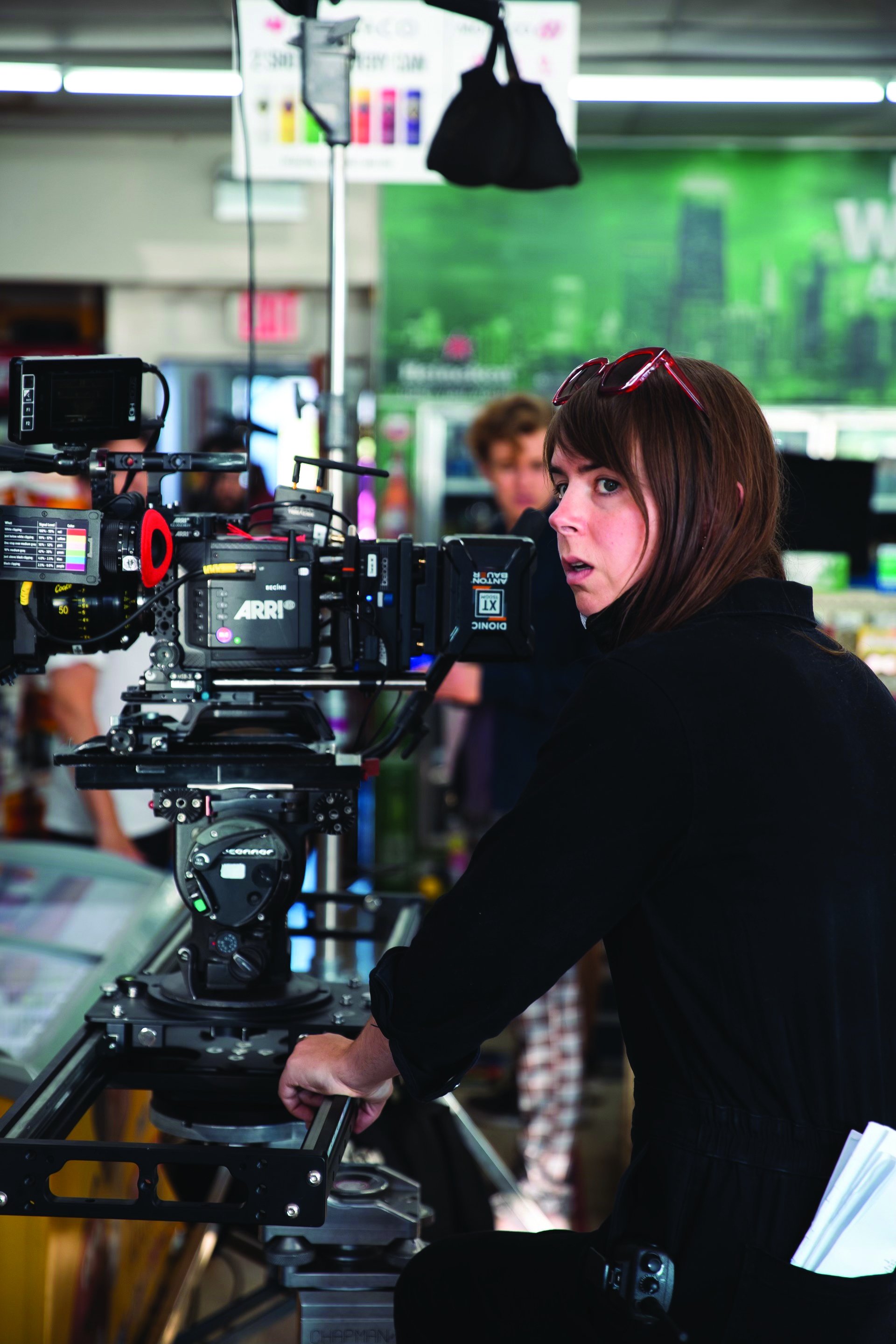
Whelden grew up on Nantucket Island in Massachusetts, very detached from the film industry. Her first foray into photographic art was in fifth grade, when her class took a field trip to Washington, D.C. and brought along disposable cameras. She remembers deciding to take pictures “at a 45-degree angle because that would be different. I did it, and the pictures were bad; everyone else’s were better. But there was something about the control of the image that I really fell in love with.”
Later, as a student at Hampshire College, Whelden studied film primarily from a documentary-based perspective. In 2009, she experienced her big break when the Portland, Oregon production company Funnelbox came to shoot a commercial at the ice-cream shop where she worked. Whelden approached the executive producer and soon began an unpaid internship, which enabled her to “observe some of Portland’s best DPs, who were coming in and shooting commercials for us. I learned to think outside the box, work with smaller budgets and find ways to say yes to the directors.”
“I’m really inspired right now to
create work that is raw and fearless.”
Whelden eventually joined the production company’s staff and started editing as well as operating B cam on some commercials. By the time she left the company in 2015, she’d started shooting mid-level commercials. In 2021, Whelden was accepted into the ASC Vision Mentorship Program, and she vividly remembers one particular meeting with her mentor, Society member Polly Morgan. “We had a conversation that lasted maybe 45 minutes, and by the end of it I had decided to move to L.A. Within two months, I was there. As a kid, I used to be a dreamer, but I’d worked myself out of that somehow. When I moved, I finally stepped back into that mindset.”
In 2023, through a Netflix/Women in Film Fellowship, Whelden was able to learn from two cinematographers she greatly admires: Sandra Valde-Hansen, ASC and Alison Kelly. Whelden is also inspired by her wife, Kelly Wilcox, who is “a production designer and also, by far, my biggest supporter. On the same day I found out I’d been named one of the magazine’s Rising Stars, I won the Altitude Award at a Women in Media event, and she accepted the award for me while I was shooting a pilot in NYC.”
Whelden’s work on the short Tight, directed by Jessica Barr, helped the project earn a 2024 Grand Jury Award nomination at SXSW, and so far, 2025 has been a banner year for the cinematographer. Magic Hour, a feature she shot for director Katie Aselton, premiered at SXSW; Sweet Talkin’ Guy, a short she worked on with directors Miss Dylan and Spencer Wardwell, was nominated for the Short Film Grand Jury Prize at Sundance; and Safe, a short she shot for Alex Kaplan, premiered at Slamdance.
Joshua Zucker-Pluda
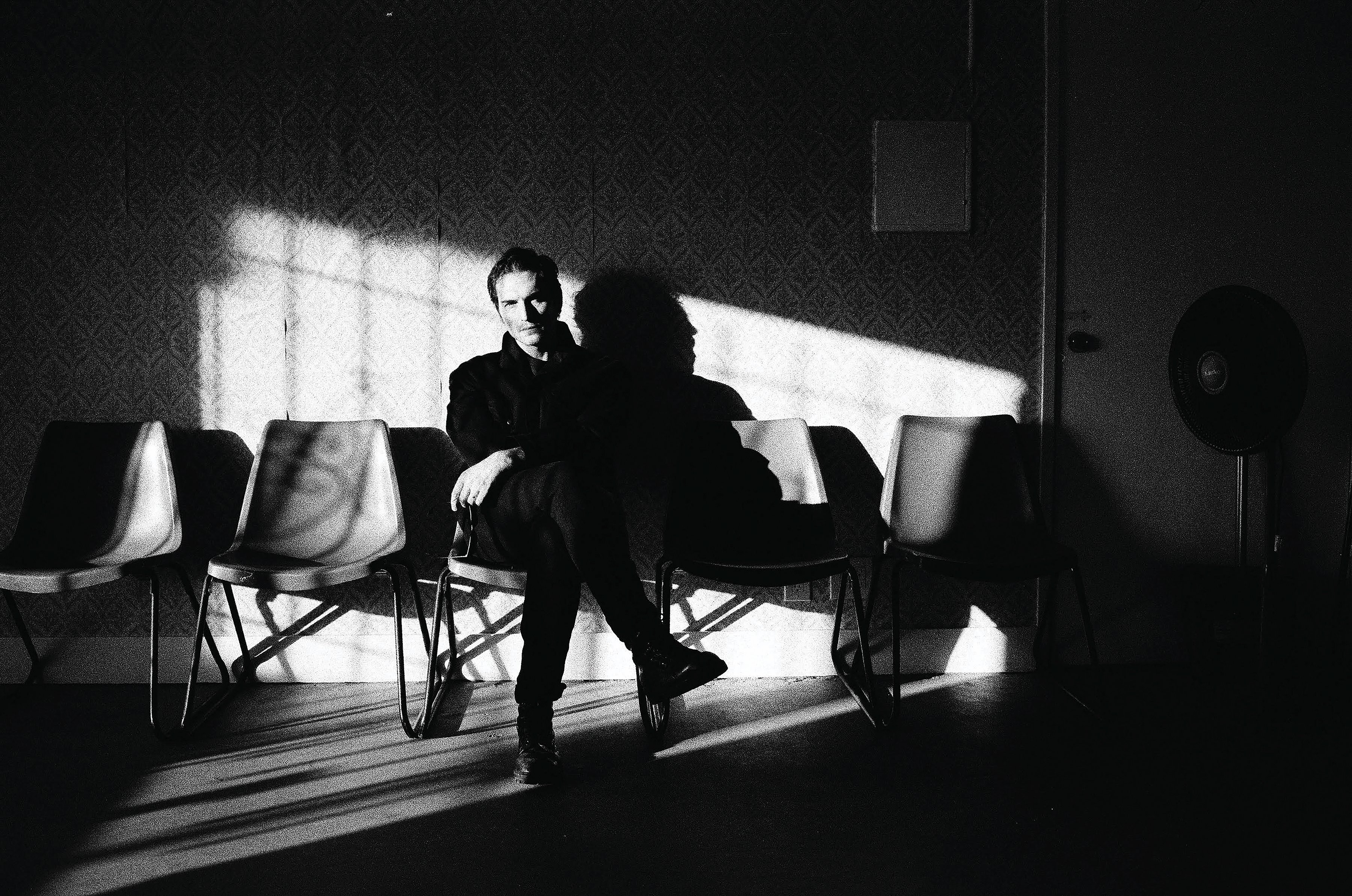
Lately, Whelden has been thinking about the responsibilities facing cinematographers in the current era. She reflects, “I’m really inspired right now to create work that is raw and fearless — that embraces its humanity to connect us all through the ancient art of storytelling. I want to help shift culture, both through the films I am a part of and through my own visibility as a woman and trans person living in my power. I didn’t grow up knowing what a cinematographer was, and by the time I started to understand the job, I certainly didn’t see anyone who looked like me. With cinematographers experiencing more visibility than ever, I hope to show the next generation that this is a role for anyone.”
An artist of both breadth and depth, Zucker-Pluda pulls from a deep well of diverse creative experiences, particularly those of his early years. “My approach to cinematography is rooted in my background in fine art, photography, and music — especially the ethics and values of the hardcore punk scene. I think that my layered, multidisciplinary foundation really sets me apart — it’s where my voice as a DP comes from.”
Zucker-Pluda pursued his BFA in film production at New York University, minoring in cinema studies and comparative literature. After graduating, he worked for the video artist Doug Aitken — all while actively touring the world in various bands. “The punk scene is about self-reliance,” he explains. “It’s about sincerity, authenticity and resilience. That ethos really informed who I became as an artist, and being in bands taught me how to collaborate and share a space with a variety of creative voices.”
“My approach to cinematography is rooted in
my background in fine art, photography and
music — especially the ethics and values of
the hardcore punk scene.”
While working as a director — shooting and editing his own projects, including commercials, music videos and documentaries — he met cinematographer Pete Konczal, ASC, who encouraged him to focus on cinematography and apply to the American Film Institute (AFI).
Zucker-Pluda says his time at AFI “changed everything. It was such a gift to take two years out of my life and focus so specifically on the craft of cinematography.” He feels indebted to his AFI mentors, who included Stephen Lighthill, ASC; Bill Dill, ASC; and Tal Lazar. He’s especially grateful for the relationships and camaraderie of his AFI peers Todd Banhazl, ASC; Ava Berkofsky, ASC; Lauren Guiteras; and Jake Magee. “They’ve all had a meaningful impact on how I think about storytelling, collaboration, and the emotional core of an image.”
Still active as a musician, Zucker-Pluda says he enjoys the balance he finds by pursuing projects that combine music and cinematography. He shot several of Metallica’s iconic videos, including Screaming Suicide, which was selected for the 2023 Music Video Competition at the Camerimage cinematography festival. Zucker-Pluda describes that video as “the most pure example of who I am as a cinematographer — I set out to create something visceral, multilayered and textural, and for that to be recognized is immensely gratifying. It encouraged me to lean into taking big swings and embrace my own creative voice.”
He recently returned from SXSW, where his short film Good Time Charlie, directed by David Black, was nominated for the Grand Jury Award. Zucker-Pluda’s work includes Laurie Anderson’s experimental documentary Heart of a Dog; 2nd-unit cinematography on the sci-fi miniseries Devs, directed by Alex Garland; commercials for Shiseido; and music videos for artists such as Doja Cat, Kali Uchis and Deafheaven. Looking ahead, he’s preparing to shoot a feature later this year and remains focused on pushing creative boundaries in both commercial and narrative work.
Revisit each year’s Rising Stars of Cinematography list: 2017 • 2018 • 2019 • 2020 • 2021 • 2022 • 2023 • 2024
